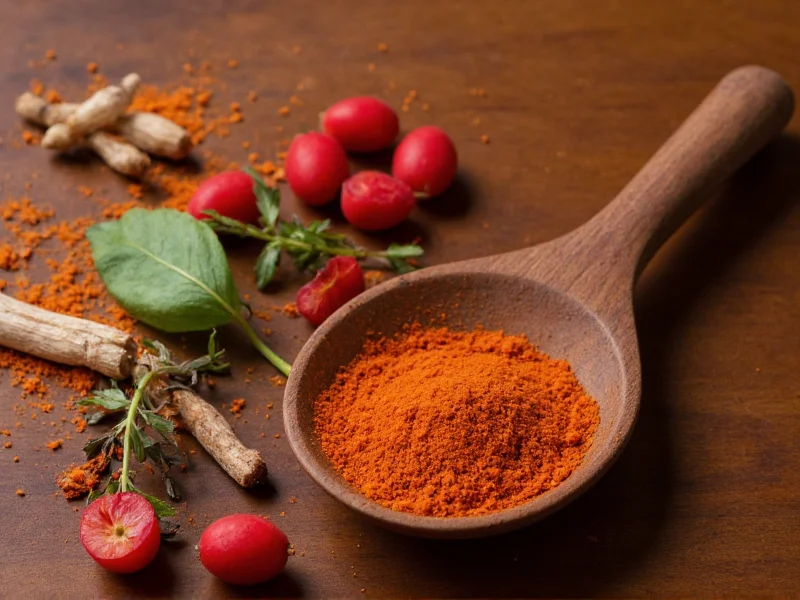Understanding Alum as a Culinary Ingredient
When discussing alum the spice, it's essential to distinguish food-grade potassium aluminum sulfate from other alum compounds used in water treatment or industrial applications. Culinary alum appears as colorless crystals with no distinctive flavor of its own but serves important functional roles in specific food preparations.
The Historical Significance of Alum in Cooking
Alum has a rich history in global culinary traditions dating back centuries. Historical records show its use in:
- Ancient Roman food preservation techniques
- Medieval European pickling recipes
- Traditional Indian spice blends (though less common today)
- Victorian-era baking powders
Before modern food science provided alternatives, alum was a kitchen staple for maintaining vegetable crispness during canning and pickling processes. Many vintage cookbooks from the 1800s and early 1900s include alum as a standard ingredient in pickle recipes.
Culinary Applications of Food-Grade Alum
Today, alum serves specific purposes in food preparation, though its usage has diminished with the availability of alternative firming agents. The primary culinary uses of alum include:
| Application | How It's Used | Recommended Quantity |
|---|---|---|
| Pickling vegetables | Dissolved in brine solution | 1/8 to 1/4 teaspoon per quart |
| Commercial baking powders | As an acid component | Regulated amounts per formula |
| Fruit preservation | Added to canning liquid | Small crystal quantities |
| Traditional cheese making | Rare specialty application | Minimal amounts |
Flavor Profile and Functional Properties
Unlike most spices, alum doesn't contribute flavor but affects texture. When exploring what does alum taste like in food, the compound itself is nearly tasteless in the small quantities used culinarily. Its primary function is as a firming agent that helps maintain the crisp texture of pickled vegetables by strengthening pectin in plant cell walls.
Food scientists note that alum works through ionic interactions with pectin molecules, creating cross-links that prevent vegetables from becoming mushy during the pickling process. This scientific explanation of alum in pickling demonstrates why it was historically valued before calcium chloride became a more common alternative.
Safety Considerations for Culinary Alum
Many home cooks wonder is food grade alum safe for consumption. Regulatory agencies provide clear guidance:
- The FDA classifies food-grade alum as Generally Recognized As Safe (GRAS) when used in appropriate quantities
- European food safety authorities permit its use as additive E522
- Consumption should remain below 100mg per serving according to most guidelines
- Individuals with kidney conditions should consult healthcare providers before consuming alum-containing products
It's crucial to distinguish between food-grade alum and non-food varieties. Difference between culinary alum and regular alum is significant—industrial alum may contain impurities unsafe for consumption. Always verify that any alum purchased for cooking is explicitly labeled as food-grade.
Where to Find Alum and Suitable Substitutes
Finding food-grade alum can be challenging as its culinary use has declined. Your best options for where to buy alum spice include:
- Specialty canning supply stores
- Some international grocery stores (particularly Middle Eastern or Indian markets)
- Online retailers specializing in food-grade chemicals
- Historical cooking supply websites
If you cannot locate food-grade alum or prefer alternatives, consider these substitutes for alum in pickling:
- Calcium chloride (marketed as Pickle Crisp)
- Grape leaves (contain tannins that maintain crispness)
- Horseradish roots (traditional alternative)
- Reduced processing time with proper canning techniques
Modern Perspectives on Alum Usage
While why do people use alum in pickling was once a common question, contemporary food science has developed safer, more effective alternatives. Many modern canning experts recommend against using alum due to:
- Availability of superior alternatives like calcium chloride
- Consumer concerns about aluminum consumption
- Limited necessity with proper canning techniques
- Difficulty finding certified food-grade products
However, traditional recipes calling for alum remain valid when using appropriate food-grade products and following recommended quantities. The traditional uses of alum in food preservation continue to inform modern food science, even as practices evolve.
Frequently Asked Questions
Is alum the same as baking soda?
No, alum (potassium aluminum sulfate) and baking soda (sodium bicarbonate) are chemically distinct compounds with different properties and culinary uses. While both have appeared in historical baking powders, they function differently in recipes.
Can I use regular alum from the hardware store for cooking?
Absolutely not. Only food-grade alum specifically labeled for culinary use should be consumed. Industrial or hardware store alum contains impurities and contaminants unsafe for human consumption.
Does alum affect the nutritional value of food?
In the small quantities used for pickling, alum doesn't significantly alter nutritional content. Its primary effect is textural rather than nutritional. However, excessive use could potentially interfere with nutrient absorption, which is why recommended quantities should be followed precisely.
How much alum should I use in pickling recipes?
Most traditional recipes call for 1/8 to 1/4 teaspoon of food-grade alum per quart of pickling liquid. Never exceed these amounts, as higher concentrations can create an unpleasant metallic taste and may pose health concerns with regular consumption.
Why has alum fallen out of favor in modern pickling?
Alum's decline stems from several factors: the development of superior alternatives like calcium chloride, consumer concerns about aluminum consumption, difficulty finding certified food-grade products, and improved understanding of proper canning techniques that maintain crispness without additives.











 浙公网安备
33010002000092号
浙公网安备
33010002000092号 浙B2-20120091-4
浙B2-20120091-4